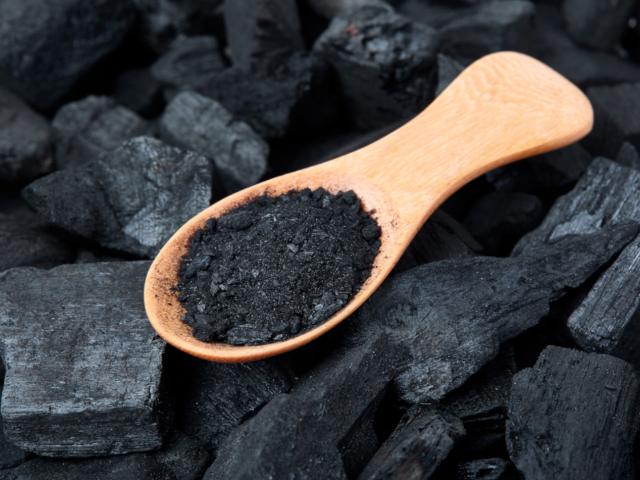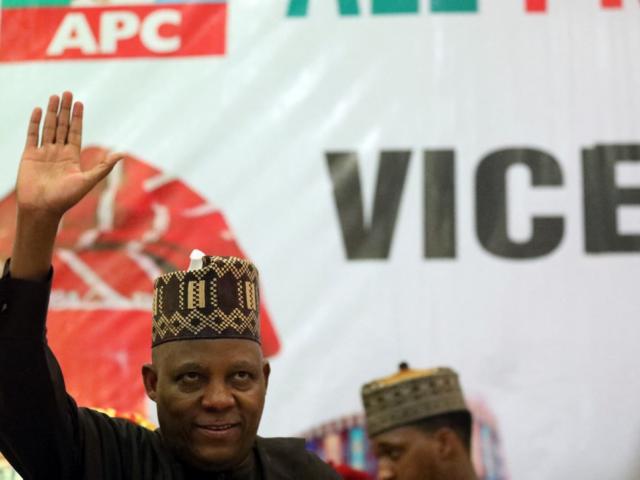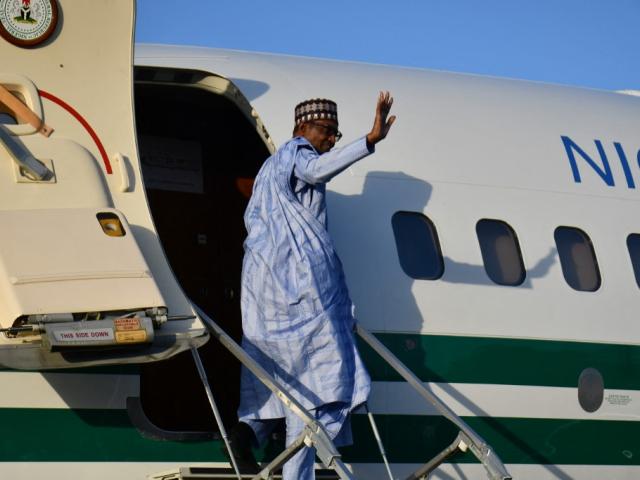-
The PDP’s Sam Ohuabunwa was correct to say Nigeria’s position on the misery index climbed under the APC’s administration. And he was mostly correct in the budgeted figure he gave for the controversial fuel subsidy.
-
But with his two claims about the country’s high youth unemployment rate, one is unproven and one incorrect.
-
And his claim that the APC is the reason Nigeria has the world’s highest number of people living in poverty is misleading – the cause can be traced back to the 1980s.
With just three weeks left until Nigeria’s 2023 presidential election, the opposition People’s Democratic Party (PDP) has sought to gut the record of the governing All Progressives Congress (APC).
The APC hopes to retain the presidency it first won in 2015 when it unseated the PDP.
One prominent PDP politician, Dr Sam Ohuabunwa, was recently on TV to make a case for his party, which scored four election wins in a row from 1999 to 2011.
He said the PDP stood a better chance of winning the upcoming vote because “there is nothing that Nigerians have enjoyed in this [APC] government”.
Ohuabunwa unsuccessfully sought the PDP’s presidential ticket. He was speaking on the Politics Today show on Channels TV in January 2023 .
He reeled out what he said was evidence that the APC had failed Nigeria.
“Nigeria became the poverty capital of the world during the tenure of this government. Nigeria has the highest unemployment in youth. The youth unemployment rate got up to 50%. The misery index climbed,” he said.
Ohuabunwa also sharply criticised the APC for budgeting N3.6 trillion (about US$7.9 billion) for a controversial fuel subsidy.
Was he correct? We aimed a spotlight at the five claims.
In 2021, we fact-checked a similar claim after the PDP blamed the APC for the popular social media platform Twitter’s decision to pick Ghana instead of Nigeria for its Africa office.
The claim has its origin in the World Poverty Clock, developed by the World Data Lab, a research firm focused on the United Nations sustainable development goals.
In 2018 it estimated that the number of people in Nigeria living in extreme poverty, defined as less than $1.90 a day, exceeded that in India.
This led to headlines such as “Nigeria overtakes India as world’s poverty capital”.
As of January 2023 the clock showed that 606.75 million people lived in extreme poverty globally, with 71.28 million or 11.9% of them in Nigeria. This is about 32% of Nigeria’s estimated 2023 population of 220.45 million.
Outgoing president Muhammadu Buhari of the APC took office in 2015, informing the claim that Nigeria became the world’s “poverty capital” under him.
But is his government really to blame?
Experts trace origins of poverty crisis back to 1980s
The APC administration did carry some responsibility, but it was misleading to blame only one government, Gafar Ijaiya told Africa Check.
Ijaiya is a professor of economics who analyses poverty at the University of Ilorin in north-central Nigeria. “Previous administrations contributed to the state of the country, in terms of the poverty rate,” he said.
“Poverty, like unemployment, builds up over a long time, and measuring it accurately is not easy because it is microeconomics, affecting households and individuals.”
Ijaiya highlighted the structural adjustment programme (SAP) of 1986 as a significant contributor to poverty in Nigeria. Structural adjustment programmes are controversial, and require a country to make economic changes in exchange for loans from the International Monetary Fund or the World Bank.
Samuel Igbatayo is a professor of economics at the Afe Babalola University in Ado-Ekiti, southwest Nigeria.
“Nigeria becoming the world's poverty capital in 2018, under Buhari’s administration, cannot be blamed on any administration. It is an accumulation over the years,” he told Africa Check.
Igbatayo, who researches poverty reduction and the agricultural commodity value chain, also traced the current high poverty rate to the 1980s.
“Before 1980, poverty was not widespread. It was restricted to some rural areas. But a global recession and oil price collapse affected Nigeria and led to poverty becoming endemic in the country.”
In focusing only on the APC’s term in office and not addressing the long-term nature of poverty, Ohuabunwa’s claim is misleading.
Ohuabunwa’s gist was that under the APC, Nigeria had the highest youth unemployment rate in its history.
The country’s most recent unemployment data covered the fourth quarter – the last three months – of 2020. The National Bureau of Statistics found that the national unemployment rate was 33.3% and the underemployment rate 22.8%.
Youth unemployment, of people aged 15 to 34, was 42.5%, and youth underemployment was 21%.
But is this the highest in the country’s history?
How Nigeria measures its unemployment rate has changed significantly over the years, Dr Baba Madu, the head of the national accounts division at the statistics bureau, told Africa Check. So we can’t categorically say this was the highest rate in history.
Madu said that previously, a person was considered unemployed if they did not work for at least 40 hours a week.
“Now we count you as unemployed if you did nothing or worked less than 20 hours a week,” he said. “You are considered fully employed if you work up to 40 hours or more a week.”
And before, there were also only two categories – employed or unemployed.
“We reviewed this and included underemployment. You are underemployed if you work between 20 and 39 hours a week or you are engaged in activities that are significantly lower than your qualification. For instance, a university graduate riding an okada [a commercial motorcycle] to earn a living,” Madu said.
This review was done in September 2014. For more details, read our factsheet.
“Due to changes to the methodology for measuring employment in Nigeria, unemployment rates cannot be compared across these years. So I cannot say whether this is the highest in history,” Madu said.
Ohuabunwa clarified this claim, saying that Nigeria’s unemployment rate was “33% in 2021 with youth unemployment reaching 53%”.
But the National Bureau of Statistics hasn’t published any labour force data since the fourth quarter of 2020.
Madu told Africa Check that the bureau and its partners have completed the fieldwork for the next labour force statistics. “We are now doing the analysis. The data will be published most likely before the end of this quarter.”
Until the new data is published, the numbers for the fourth quarter of 2020 remain the most recent. This data puts the youth unemployment rate at 42.5%, up from 34.9% in the second quarter of 2020. It defines youth as people aged 15 to 34.
There is no evidence the youth unemployment rate has ever reached 50% since the APC took power in 2015.
In a previous fact-check, we explain that the data shows that Nigeria’s unemployment rate, and youth unemployment, rose steadily from 2014 to 2018.
But the bureau’s breakdown of the unemployment rate by age shows that the rate was 53.4% for ages 15 to 24 and 37.2% for ages 25 to 34. Ohuabunwa would have been correct if he had been clear he was talking about young people aged 15 to 24.
The misery index, created by US economist Arthur Okun, measures the degree of economic distress individuals and households in a country feel, relative to the availability of jobs and the cost of living. The index is calculated by adding the inflation and unemployment rates.
The most recent version of the index was developed by Steve Hanke, a professor at Johns Hopkins University in the US. In addition to unemployment and inflation rates, it considers other indices such as bank lending rates and gross domestic product per person.
Nigeria was not on Hanke’s 2015 misery index as “only countries with current data” were considered. In 2022 it ranked as the 11th most miserable out of 156 countries, with an index of 59.4.
In our earlier analysis of how Nigerians have fared under Buhari’s government, we used Okun’s method to calculate the country’s misery index. It was 17.2 in the second quarter of 2015 when the APC came to power, climbing to 51.01 in 2022.
Nigeria’s unemployment and inflation rates have gone up in the past seven years under Buhari.
The inflation rate went from 9% in May 2015 to 21.34% in December 2022. Unemployment rose from 8.2% in the second quarter of 2015 to 33.3% in the fourth quarter of 2020, which is the most recent data.
On this claim Ohuabunwa was correct.
Ohuabunwa also claimed in the interview that the APC-led federal government budgeted N3.6 trillion for fuel subsidy payments. But he didn’t say what period he was referring to.
We asked him, and he said he was talking about the amount budgeted for the first half of 2023.
“I made reference to the budgeted subsidy payment of about 3.6 trillion for the first six months of 2023. My point is that [petrol] is selling at above the official price in most parts of the country. In the southeast and south-south, where I spent most of my time through December and now, prices range from N240 to N500 per litre in many filling stations,” he wrote in an email response to our query.
“Since nobody is enforcing the official prices, it is evident that the government has ‘surreptitiously’ removed the price cap, allowing market forces to determine the price. If the cap has been removed, then who is receiving the subsidy payment? Can we be paying subsidy and at the same time buying petrol at market price?”
According to finance minister Zainab Ahmed, N3.36 trillion was earmarked for the fuel subsidy in Nigeria’s 2023 budget. This, she said, would cover subsidy payments for the first six months of 2023.
“In the 2023 budget framework, it is assumed that the petrol subsidy will remain up to mid-2023, based on the 18-month extension announced in early 2022. In this regard, only N3.36 trillion has been provided for PMS subsidy,” a 2023 budget document reads.
Ohuabunwa’s claim of about N3.6 trillion is slightly higher than the actual figure, N3.36 trillion.
Fuel subsidies in Nigeria: a slippery debate
The fuel subsidy has been controversial in Nigeria. It is feverishly debated, with the government caught between economic realities and political concerns.
The country is Africa’s largest oil exporter but, due to a lack of refining capacity, imports nearly all its fuel. Nigerians are also no strangers to crippling shortages at the pump caused by market inefficiencies.
Many Nigerians view the subsidy as one of the few benefits of living in an oil-producing economy.
Authorities have tended to hold the pump price at a fixed price per litre, with the market difference paid to oil marketers. There have been claims that without the subsidy, Nigerians would pay up to five times more for petrol.
But many have called the subsidy system fraudulent, including president Muhammadu Buhari. His predecessor, Goodluck Jonathan, removed the fuel subsidy in January 2012, but reversed the decision after nationwide protests. The subsidy removal led to higher pump prices.
A decade later, Buhari’s administration has also failed to follow through with its plan to end the subsidy regime in January 2022. Buhari postponed the subsidy’s removal to June 2023, a month after he leaves office, leaving the headache to his successor.








Add new comment